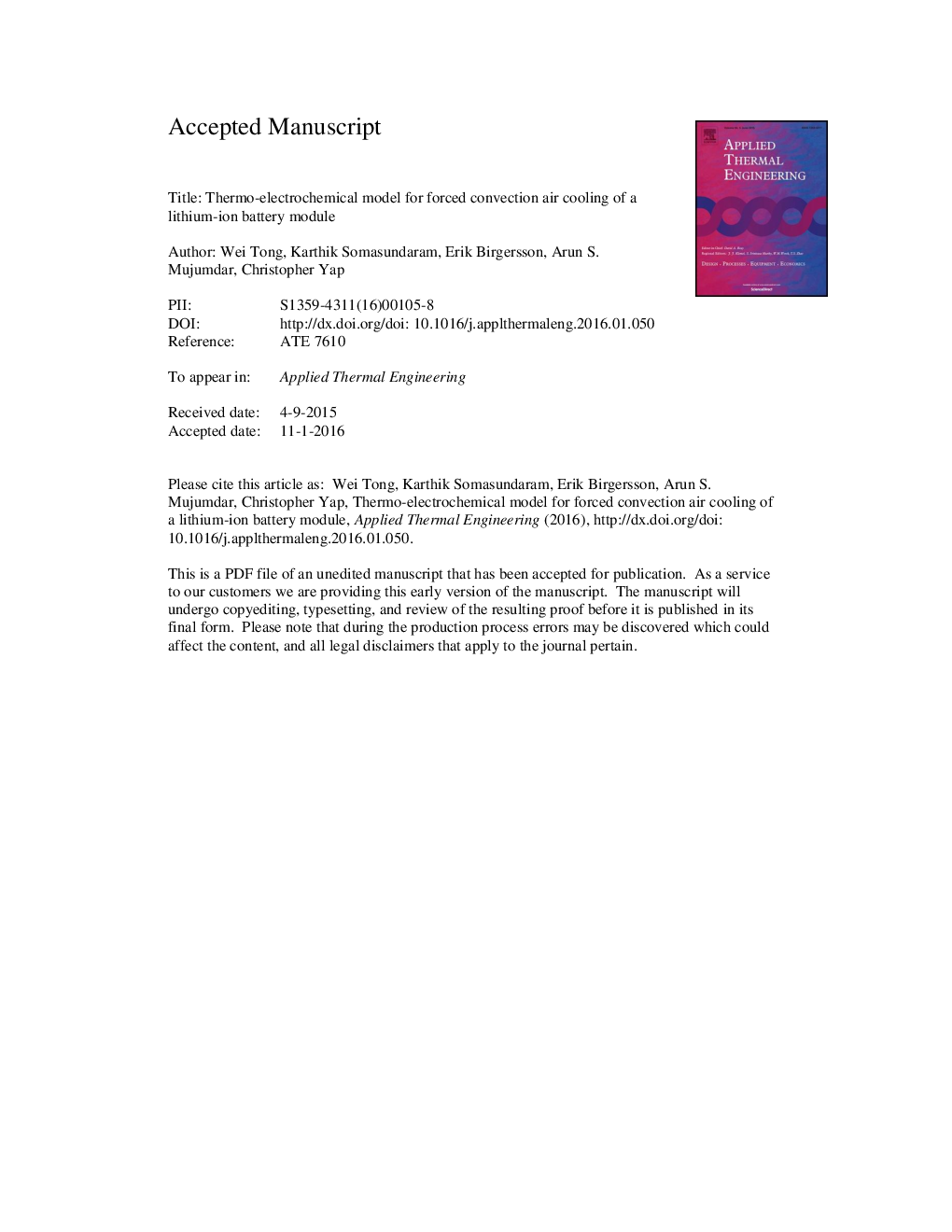| Article ID | Journal | Published Year | Pages | File Type |
|---|---|---|---|---|
| 644722 | Applied Thermal Engineering | 2016 | 25 Pages |
Abstract
Thermal management is critical for safe and reliable operation of lithium-ion battery systems. In this study, a one-dimensional thermal-electrochemical model of lithium-ion battery interactively coupled with a two-dimensional thermal-fluid conjugate model for forced convection air cooling of a lithium-ion battery module is presented and solved numerically. This coupled approach makes the model more unique and detailed as transport inside each cell in the battery module is solved for and thus covering multiple length and time scales. The effect of certain design and operating parameters of the thermal management system on the performance of the battery module is assessed using the coupled model. It is found that a lower temperature increase of the battery module can be achieved by either increasing the inlet air velocity or decreasing the distance between the cells. Higher air inlet velocity, staggered cell arrangement or a periodic reversal airflow of high reversal frequency results in a more uniform temperature distribution in the module. However, doing so increases the parasitic load as well as the volume of the battery module whence a trade-off should be taken into account between these parameters.
Related Topics
Physical Sciences and Engineering
Chemical Engineering
Fluid Flow and Transfer Processes
Authors
Wei Tong, Karthik Somasundaram, Erik Birgersson, Arun S. Mujumdar, Christopher Yap,
